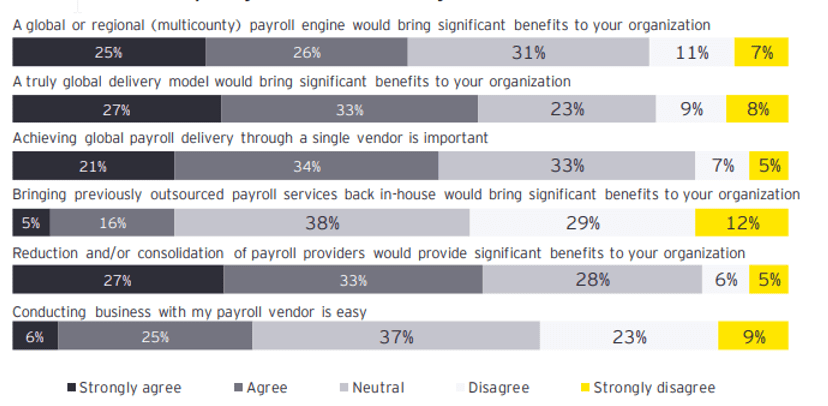Congratulations! You’ve decided to evaluate your current global payroll model and see if it’s still right for the needs of your organization. But now what? What do you need to understand, what information must you possess to ensure you select the model that best aligns with your business needs?
In our previous blog, we explained the 3 key global payroll models and what each offers. Now it’s time to talk about next steps – choosing the right global payroll model and what to consider in the evaluation process. In finding the right fit for your organization, it’s critical that you start by answering these questions:
What is your global payroll strategy?
Compile a list of your short- and long-term goals. Take a look at our recent blog on ‘5 Key Areas to Address in Your Global Payroll Strategy’ for guidance and advice to create the optimum strategy. In the main, the focal point of this should be in defining the future state of your global payroll operations and what success looks like for your organization.
As you design this plan and consider which payroll model best aligns, consider the following:
- What is the vision for the department and how can you align with the overarching company strategy?
- How can you further improve upon processes already in place and where can efficiencies be achieved?
- What are the requirements in order to make those improvements? – whether that be through capabilities needed on the team or supporting technology
What is your payroll profile?
In order to determine the right model for you and where you’re going, you need to know what’s happening right now. Take time to answer the following questions and build a better understanding of your payroll profile:
- The Organization
- Where are employees located and how many are in each location?
- Is there future plans for expansion into additional countries?
- Do you have any globally mobile employees – on assignment to another jurisdiction or multi-jurisdictional workers?
- The Payroll Team
- Have you completed a thorough review of your current global payroll department and processes?
- Do you know the current roles and responsibilities within the broader payroll team?
- How do the payroll, HR and finance departments interact globally?
- Is there a centralized global payroll function?
- Do you have a clear understanding of the processes in place that support global payroll processing?
- Are there any split payroll arrangements?
- Payroll Platform and Provider
- Have you recently reviewed your payroll technology and service provider?
- If you’re thinking about a change, do you know when your current contract is due to expire?
- If you have multiple contracts in play, how do contractual arrangements differ from country to country?
What are your biggest payroll challenges?
Identify your top roadblocks. Some of these might include areas such compliance, global oversight, reporting standardization or in-country requirements.
Once you know where the main issues lie, you can then analyze and examine your current model and supporting solution to more easily decide if this is still the right one for you.
Is your current payroll technology and provider effective?
As part of your evaluation, you should also consider your current system capabilities and whether you have the right payroll technology in place. In reviewing your technology ask yourself:
- How effective is your current payroll platform and provider in meeting your needs?
- How easy is it for you to gather information and reports from your current system?
- Does your global payroll solution integrate with existing human capital management (HCM) and time and attendance (T&A) systems worldwide?
- Would your organization benefit from the automation of workflow driven processes to minimize touchpoints and improve process efficiency?
- Is it important that your employees can access a self-service area to review and download payslips and other simple FAQs?
- Do you want your payroll solution to create uniform reports to give you visibility on your worldwide headcount?
Is a global unified payroll platform the preferred option?
According to EY research, there is a strong preference for the use of a global unified payroll platform. When asked to what extent they agreed with the following statements, here’s what payroll professionals had to say:

Source: 2019 EY Global Payroll Survey Report
In short, the majority of payroll professionals believe the most beneficial solution is one that offers global payroll consolidation.
After completing you’re evaluation and if you find yourself amongst those payroll professionals that believe the global unified payroll platform is for you, be sure it offers the following:
- Global oversight of payrolls across countries worldwide
- Increased efficiency, accuracy, and transparency
- Improved compliance through in-country legislative experts
- Enhanced analytics and insights into employer costs
- Access to advanced global payroll reporting and real-time data analytics
- Automates steps in your payroll process – giving employees time to focus on value add tasks and reducing the likelihood of human error
Asking yourself these questions will give you a strong indication as to which model is right for your company and your global payroll team. If the time is right to make the move to payroll consolidation and centralization, I’d encourage you to read our whitepaper on Building a Business Case for Global Payroll Technology which will support you further towards this exciting project.

